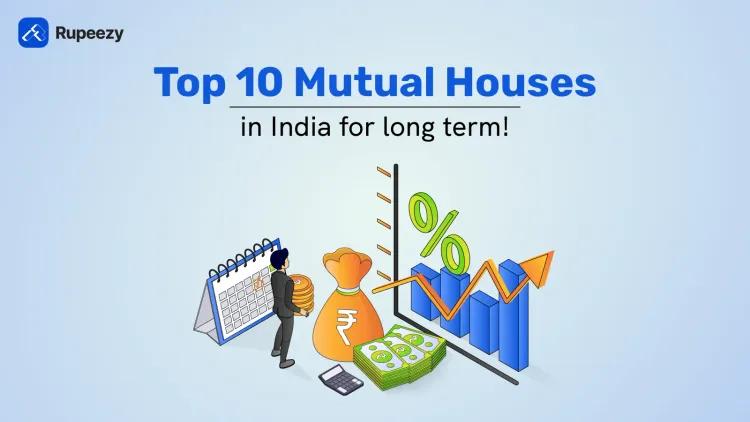What is Flexi Cap Fund? Meaning, Features, Benefits and Risks


00:00 / 00:00
Have you ever wondered how mutual funds choose which companies to invest in, whether they are small, medium, or large? This is where the role of Flexi Cap Funds comes into play. The fund managers invest depending on the opportunities they find, according to the flexibility available to them. This provides them with exposure to invest in businesses of different sizes and kinds with the funds. This article will explain what is Flexi Cap Fund, its key features, benefits, potential risks, and whether it is a good option for investing. Let us look at the article to know more about it.
What is Flexi Cap Fund?
A Flexi Cap Fund is an equity mutual fund that makes investments in large, mid, and small-cap companies. It provides dynamic allocations, allowing fund managers to invest their money across small, medium, and large businesses based on opportunities and market trends, allowing them to take advantage of the best market segments. These funds are appropriate for long-term wealth creation and to balance stability.
For example, suppose you invest ?1,000 in a Flexi Cap Fund. In that case, the fund manager may invest ?200 in high-potential small businesses, ?300 in expanding exposure to mid-sized companies, and ?500 in reliable large companies. The manager has the freedom to alter this mix at any time if market trends change. While they aim for high returns, this flexibility helps them lower risk.
Features of a Flexi Cap Fund
As we understood what is flexi cap fund, let us now examine the key features of the Flexi Cap Fund, which are mentioned in the following points:
Diversification: Flexi Cap Funds help investors to invest across different market capitalisation segments like small, mid, and large cap to reduce the risk of losing money, which an investor might face if invested in one specific segment.
Flexibility: The fund manager has the freedom to invest across different sectors and market capitalisations depending on the market fluctuations and trends.
Professional management: Fund managers make informed investment decisions based on their expertise, investment strategies, and knowledge.
Customisation: Inventors can choose a fund that matches their risk tolerance and financial goals.
Growth: Flexi cap funds allow investors to invest in a variety of market caps, including small, mid, and large companies, which can help investors earn higher returns from the best-performing stocks while reducing risk by exiting the low-performing ones.
How Does a Flexi Cap Fund Work?
Here is how the Flexi Cap Fund works:
1. Market Capitalisation: Fund managers allocate assets among different Market Capitalisations like Large-cap, Mid-cap, and Small-cap depending on the market conditions. To understand what a Flexi-Cap Fund is, it's important to first know how companies are grouped based on their market size. SEBI (Securities and Exchange Board of India) has divided them into three types:
Large-Cap Stocks: These are the top 100 biggest companies based on market capitalisation in the stock market. They are well-established, financially strong, and usually deliver stable returns.
Mid-Cap Stocks: These are companies ranked from 101 to 250 by market capitalisation. They are still growing and may give higher returns than large-cap stocks, but carry a bit more risk.
Small-Cap Stocks: These are companies ranked 251 and below based on market capitalisation. They have high growth potential but can also be more risky and unpredictable.
2. Role of Fund Manager: Flexi Cap Funds are managed actively by the Fund Manager, for example:
Understanding and analysing the current market trends and the overall economy.
Checking how financially strong a company is and its business in its respective industry.
Market risk and volatility.
Checking the opportunities for proper diversification.
3. Diversification and allocation: Based on fund managers convictions, they allocate the funds across different market caps as per the investment criteria. They need to maintain a minimum of 65% exposure requirement in equity-related instruments as per SEBI.
What are the Benefits of Investing in Flexi Cap Funds
Here are some potential benefits that an investor can get after investing in Flexi Cap Funds:
Diversified Portfolio: A diversified portfolio allows investors to have exposure across a range of companies, industries, and sectors, which can help to earn decent returns and lower downside risk.
Flexibility: The Investors can get a wide exposure not only towards equity but they can get exposure towards debt and money market instruments, REITs and InvITs, arbitrage and special situations, and others.
Adaptable to market swings: Fund managers can increase their large-cap holdings for stability during market swings and then switch to mid and small-cap funds for higher returns. They actively manage funds due to various macroeconomic factors.
Professional Management: Flexi Cap funds are managed by qualified fund managers who can use their experience, knowledge, and abilities to distribute investors' money among several funds. This can help investors to earn decent returns and create wealth who lack the time and expertise to make investments on their own.
Risks and Limitations of Investing in Flexi Cap Fund
Let us see the risks and limitations of investing in a Flexi Cap Fund that investors should be aware of:
Fund Manager’s role: The performance fund relies on the fund manager’s knowledge and investment strategies. As flexi cap funds don't have a predetermined focus, it is the manager's responsibility to make strategic decisions regarding the allocation of assets. If the fund manager is inefficient in taking advantage of the market opportunities, the funds may not deliver as expected.
Volatility of the market: The diversification that helps flexi cap funds remain stable can also expose them to market fluctuations. During the time of market instability, when all the segments of the market are affected, the fund can also experience a negative impact. Although diversification of a portfolio helps in mitigating risk, it certainly doesn’t eliminate the risk. As a result, investors need to understand the risks and be ready for short-term fluctuations in their investment.
Concentration on a particular sector or stock: If a fund manager expects a certain sector to grow, he might allocate most of the funds to that sector. This can, in theory, lead to high returns, but if the sector underperforms, the fund returns will be affected.
Flexi Cap vs Multi Cap Funds – What’s the Difference?
The table below shows the key differences between Flexi Cap and Multi Cap Funds:
Aspects | Flexi Cap Funds | Multi-Cap Funds |
Meaning | A Flexi Cap Fund is an open-ended equity mutual fund that makes investments in large, mid, and small-cap companies with different market capitalisations. | Multi-cap funds are diversified equity funds that make investments across different market capitalisations. |
Equity Exposure | In Flexi Cap Funds, the minimum investment exposure needs to be 65% in equity-related instruments. | In Multi-Cap Funds, they need to maintain a minimum investment exposure of 75% in equity-related instruments. |
Allocation of Market Cap | SEBI does not impose any restrictions on Flexi Cap Funds, as they are free to invest in any market cap apart from the equity-related instrument threshold. | SEBI mandates the fund to maintain at least 25% of its portfolio allocation across large, mid, and small-cap companies. |
Who can invest? | Individuals looking to diversify their portfolio and reduce risk, as well as those with strict allocation limits. | Investors who are willing to take more risk than flexi-cap funds to get high returns. |
Time Horizon | Over the period, the investors need to have an investment horizon of 5 years to grow their wealth. | Investors need to have a longer investment horizon of 5 to 7 years to grow their wealth. |
Fund Manager’s Authority | Fund managers have access to select from the specific market caps that are available to them. | The fund manager has the freedom to select stocks and market capitalisation as per the allocation limit. |
Who Should Invest in Flexi Cap Funds?
Flexi-Cap Fund is suitable for investments in the following categories:
Investors who value active fund management and seek long-term growth and capital appreciation.
Investors with a moderate to high risk tolerance.
Individuals looking to diversify their portfolio and reduce risk, as well as those with strict allocation limits.
For investors who want to invest in other cap funds for steady security and possible growth, but don't want to fully commit to one, such as large-cap funds.
Flexi-cap mutual funds are the best option for investors seeking flexible funds that can adapt to market swings and balance growth strategies.
Is Flexi Cap Fund Good to Invest In?
To understand if the flexi cap fund is good to invest in or not, let us see this return comparison table with other types of funds, and here are the following:
Scheme Name | AUM (Rs. Cr) | 5Y Returns | Standard Deviation | Beta | Sharpe Ratio | Treynor's Ratio |
7,153 | 33% | 16.08 | 1.07 | 0.97 | 0.15 | |
75,784 | 31% | 11.58 | 0.8 | 1.53 | 0.22 | |
5,917 | 29% | 15 | 1.04 | 1.29 | 0.19 | |
18,679 | 28% | 12.67 | 0.9 | 1.19 | 0.17 | |
1,03,868 | 27% | 10.71 | 0.66 | 1.36 | 0.22 | |
2,642 | 27% | 13.78 | 0.99 | 1.09 | 0.15 | |
4,940 | 25% | 14.51 | 1.03 | 1.03 | 0.14 | |
6,262 | 24% | 12.72 | 0.89 | 0.76 | 0.11 | |
2,313 | 24% | 12.75 | 0.92 | 0.94 | 0.13 | |
22,826 | 24% | 12.88 | 0.92 | 1.01 | 0.14 |
Note: The above details are considered as of 19th June 2025. The data is subject to market fluctuations. We have shortlisted the top 10 funds based on 5-year returns from various sources.
Those who wish to invest in a variety of large, mid, and small businesses could consider Flexi Cap Funds. Depending on the state of the market, these funds allow the fund manager to freely transfer capital across various business sectors. This helps to increase returns and manage risk.
According to the return comparison table, over the previous three to five years, many Flexi Cap Funds, such as the Quant Flexi Cap Fund, have produced the highest return of 33% in five years. Funds like HDFC and Parag Parikh performed well during the market fluctuation with fewer swings, demonstrating their relative safety. Therefore, if you're looking for long-term growth, Flexi Cap Funds might be a good investment option, according to the above table. Before making a call, it's crucial to review the fund's performance and weigh your risk tolerance or consult a financial professional.
Top 15 Flexi Cap Funds in India
The top 15 flexi cap funds with the highest fund size in India as of May 2025 are displayed in the table below. This resembles the confidence of the investors to invest their hard-earned money due to their long-term growth and confidence in the fund manager's performance:
Flexi Cap Funds | Fund Size (Rs. in crores) |
Parag Parikh Flexi Cap Fund | 1,03,868 |
HDFC Flexi Cap Fund | 75,784 |
Kotak Flexicap Fund | 52,533 |
UTI Flexi Cap Fund | 25,434 |
Aditya Birla Sun Life Flexi Cap Fund | 22,826 |
SBI Flexicap Fund | 21,747 |
Franklin India Flexi Cap Fund | 18,679 |
ICICI Prudential Flexi Cap Fund | 17,484 |
Canara Robeco Flexi Cap Fund | 13,057 |
Motilal Oswal Flexi Cap Fund | 13,023 |
Axis Flexi Cap Fund | 12,824 |
DSP Flexi Cap Fund | 11,837 |
Nippon India Flexi Cap Fund | 8,951 |
Bandhan Flexi Cap Fund | 7,357 |
Quant Flexi Cap Fund | 7,153 |
Note: The above table shows the data as per the end of May 2025 month end as per various sources.
How to Start Investing in a Flexi Cap Fund
Here is how you can invest in a Flexi Cap Fund by considering the following points:
Choose the platform: Invest through a reputable brokerage company like Rupeezy to ensure your funds are tracked properly
KYC Compliance: Then, proceed with the required KYC compliance process by providing the required details, like PAN, Aadhar, and other necessary information.
Start your investment: After the KYC process, you can now begin your investment transaction by searching for the Flexi Cap funds available in Rupeezy and then invest your money in the Flexi Cap that aligns with your investment goals.
Monitor Regularly: After investing your money in your desired flexi cap fund, assess the performance regularly.
Conclusion
Flexi Cap Funds provide flexibility, diversification, and expert management, making them an excellent choice for changing markets. Flexi Cap Funds are ideal for those who believe in expert fund management and want their money to grow with the market across all cycles, and expect to achieve consistent growth without being locked into a single segment. Allow your investments to grow in the long run rather than focusing on short-term gains.
The content on this blog is for educational purposes only and should not be considered investment advice. While we strive for accuracy, some information may contain errors or delays in updates.
Mentions of stocks or investment products are solely for informational purposes and do not constitute recommendations. Investors should conduct their own research before making any decisions.
Investing in financial markets are subject to market risks, and past performance does not guarantee future results. It is advisable to consult a qualified financial professional, review official documents, and verify information independently before making investment decisions.

All Category









